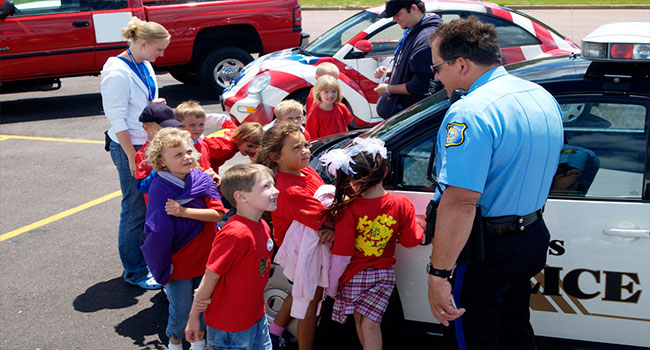
Sacramento Schools to Reduce Number of School Resource Officers Under New Safety Plan
The plan was approved by the Sacramento school board last week after community members asked for more mental health resources and fewer police in schools.
- By Haley Samsel
- August 21, 2019
After receiving feedback from administrators and community members on school safety measures, the Sacramento, California school board approved a new plan for the upcoming school year on August 15 that will reduce the number of school resource officers in the district and place them off campus.
The proposal, known as Reimagine School Safety, seeks to provide greater mental health support resources and more training on implicit bias in place of the current number of school resource officers. There are currently eight officers and one sergeant assigned to cover 75 schools; the new plan would reduce that total to about three, according to local outlet KCRA.
In addition, the officers will be moved off school sites — six of the officers were previously assigned to schools — which will make them available to respond to incidents at any campus. The district will also hire a school safety director and a centralized police sergeant under the new plan.
Some community members are applauding the $1.4 million plan and the shift away from police in schools, citing the negative experiences of people of color with law enforcement.
“I strongly believe that cops do not belong in our schools nor should school districts use educational funds to them,” community member Laura Vu said at the school board meeting. “The majority of students in our district are students of color, many who come from families and communities with historical or current trauma of law enforcement’s institutional racism.”
Tere Flores of community activism group Sacramento Area Congregations Together said many residents prefer more funding for mental health professionals in schools that would help address students’ issues before they escalated to incidents that involve a police response.
"We find that a lot of these incidents that end up escalating and boiling up usually could have been avoided if there were more resources that the students could access," Flores said.
But several school administrators and teachers in Sacramento told KCRA that they don’t support the removal of school resource officers, even if they support increased mental health resources for students.
“I'm in agreement that we need a comprehensive approach to working with students and school safety, which includes mental health, which includes staff trainings, all the things that are proposed in the current outline, but I do not think we need to get rid of the one thing that we currently have that is working," Julie Snider, a high school teacher, said.
A principal in the district, Tony Perez, told the board that the move will hurt schools’ ability to adequately respond to incidents on campus.
“The thought of losing SROs is keeping me up at night,” Perez said, according to KCRA. “For the mental health aspect, for the ability to have their assistance in a 51-50 situation, minutes are important. If I have to wait on a regular dispatch call, I can’t control that situation. That’s out of my scope."
About the Author
Haley Samsel is an Associate Content Editor for the Infrastructure Solutions Group at 1105 Media.